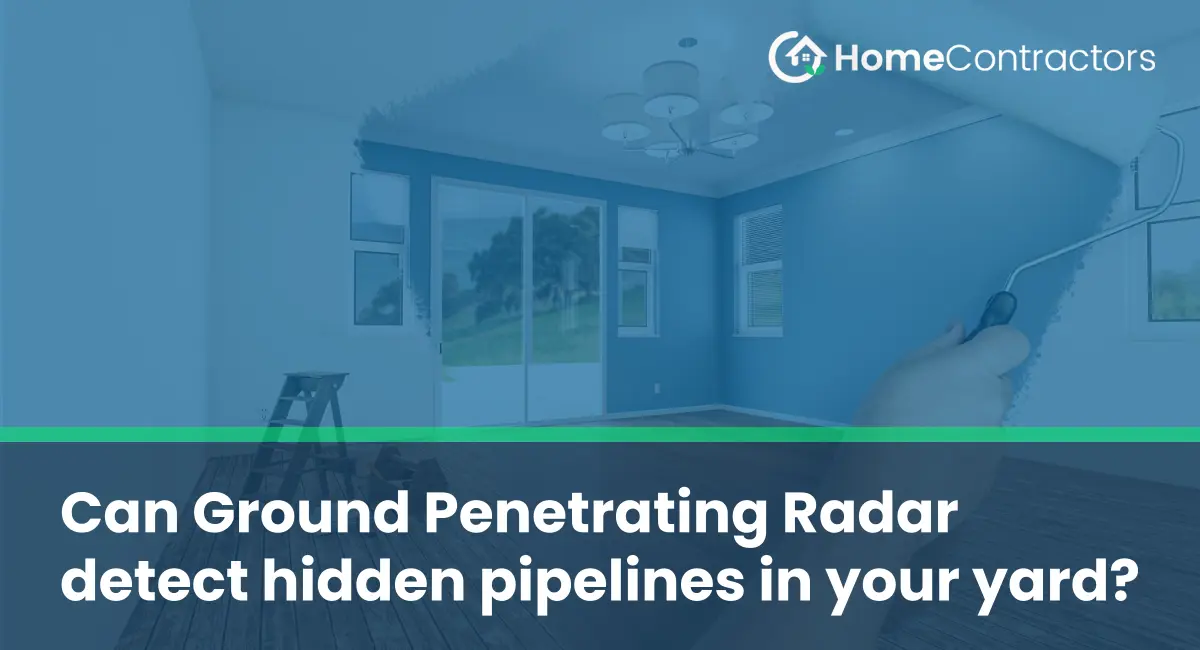Ground Penetrating Radar (GPR) is a non-destructive geophysical method that uses electromagnetic waves to create images of objects beneath the ground surface. It has gained popularity in various fields for its ability to locate and map underground structures. One common application of GPR is locating hidden pipelines in yards and other residential areas. In this article, we delve into the capabilities of GPR in detecting hidden pipelines and explore its benefits and limitations.
Understanding Ground Penetrating Radar:
Ground Penetrating Radar works by transmitting high-frequency electromagnetic pulses into the ground and analyzing the reflections received. As the waves encounter various subsurface materials and objects, they bounce back at different rates, allowing the GPR system to create a detailed image of the underground environment.
Benefits of Using GPR for Pipeline Detection:
- Non-destructive Nature: GPR offers a non-intrusive method of locating pipelines, minimizing the need for excavation or other invasive techniques. This not only reduces property damage but also ensures the safety of existing pipelines.
- Accurate Imaging: GPR provides high-resolution images that can accurately detect and differentiate buried pipes from surrounding materials. It offers precise depth measurements, enabling pipeline location confirmation before excavation or construction work.
- Time-Efficiency: Compared to traditional methods like manual probing or magnetic detection, GPR can cover larger areas efficiently. This makes it an invaluable tool for surveys in residential yards with numerous possible pipeline locations.
Limitations of GPR for Pipeline Detection:
- Depth Limitations: The effectiveness of GPR in detecting pipelines depends on their depth. Generally, GPR is most effective in locating shallow pipelines (up to 20 feet deep) but may encounter challenges for deeper installations.
- Soil Variations and Conditions: GPR’s accuracy can be influenced by various factors, such as soil composition, moisture content, and the presence of rocks or other obstructions. Dense or clay-like soils may attenuate the radar signal, limiting its ability to penetrate deeper layers.
- Pipe Material: The success of GPR in detecting pipes can also depend on the materials used. Metallic or highly conductive pipes are generally easier to locate, while non-conductive materials like PVC may require additional expertise or different GPR frequencies for accurate detection.
Best Practices for Effective Pipeline Detection:
- Hire Professionals: Engaging experienced GPR service providers or geophysical surveyors can ensure accurate and reliable results. These experts understand the intricacies of GPR systems and possess the necessary skills to interpret the data accurately.
- Conduct Prior Research: If you suspect the presence of hidden pipelines in your yard, gather as much information as possible about their potential location. Accessing previous records or consulting with utility companies can provide valuable insights and aid in survey planning.
- Combine Techniques: While GPR is a powerful tool, it can be complemented by other methods to increase accuracy. Magnetic detection, for example, can be used to locate metallic pipes that may be missed by GPR alone.
Ground Penetrating Radar offers an efficient and non-destructive solution for detecting hidden pipelines in residential yards. Its ability to provide accurate imaging and minimize property damage has made it a go-to technology for pipeline location confirmation. However, understanding the limitations of GPR and employing professionals can enhance the reliability and effectiveness of surveys. By combining various techniques, homeowners can ensure the safety and integrity of their yards while avoiding costly mistakes during construction or excavation projects.
